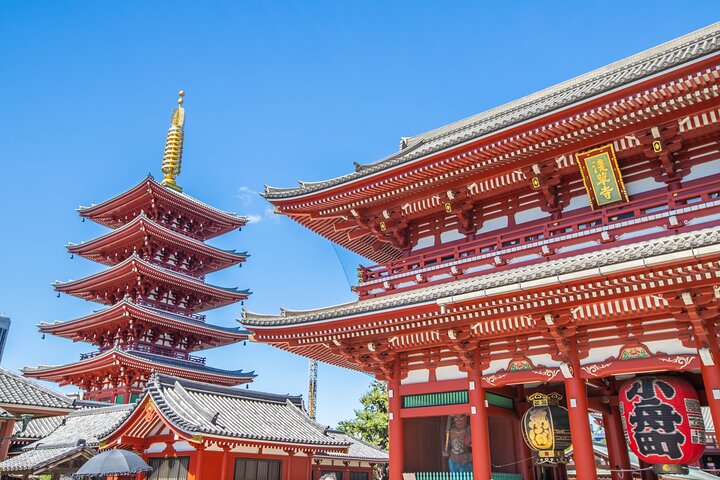Savoring Tradition: A Culinary Journey Through Asakusa’s Rich History
Drawn by the allure of Tokyo’s historical district, I embarked on the Asakusa Culinary Tour to explore the rich tapestry of tradition and modernity. Join me as I delve into the heart of Asakusa, where history, spirituality, and culinary delights intertwine.
A Journey Through Time at Kaminarimon Gate
As I embarked on the Asakusa Culinary Tour, the first stop was the iconic Kaminarimon Gate. This grand entrance to the Senso-ji Temple is a symbol of Tokyo’s rich history and spirituality. The massive red lantern, weighing over 700 kg, is a sight to behold, but it was the intricate dragon carving underneath that truly captured my attention. This hidden detail, symbolizing protection and good fortune, is a testament to the depth of Japanese culture.
Walking through the gate, I felt a sense of reverence and awe. The statues of the Shinto gods of wind and thunder, Fūjin and Raijin, stood as guardians, reminding me of the harmonious blend of Shinto and Buddhist traditions that permeate Japanese society. This was not just a gateway to a temple, but a portal to a world where history, spirituality, and modernity coexist.
Culinary Delights on Nakamise Shopping Street
Beyond the Kaminarimon Gate lies Nakamise Shopping Street, a vibrant corridor that has served pilgrims and tourists for centuries. As I strolled down this bustling street, the aroma of traditional snacks and the sight of colorful souvenirs filled the air. Each shop seemed to tell a story, offering a glimpse into the local culture and craftsmanship.
I couldn’t resist stopping at Kagetsudō Kaminarimon, renowned for its oversized melonpan. This sweet, fluffy bread with a crispy outer layer was a delightful treat, embodying the essence of Asakusa’s vibrant food scene. As I savored each bite, I felt a connection to the generations of locals and visitors who have enjoyed this iconic snack.
The street was a sensory feast, with the sounds of vendors calling out to passersby and the sight of traditional crafts on display. It was a reminder of the enduring traditions that continue to thrive in the heart of Tokyo.
Evening Revelry on Hoppy Street
As the sun began to set, I made my way to Hoppy Street, a lively lane known for its old-school izakayas and the signature drink, Hoppy. This low-alcohol beer-flavored beverage, often mixed with shochu, is a nostalgic nod to post-war Japan when beer was a luxury.
The retro atmosphere of Hoppy Street transported me back to the Showa era, with locals and tourists alike enjoying casual food and drinks in a friendly, down-to-earth setting. The grilled seafood and yakitori were perfect accompaniments to the refreshing Hoppy, creating a culinary experience that was both traditional and timeless.
As I sat among the locals, sharing stories and laughter, I realized that this tour was more than just a culinary adventure. It was a journey through Tokyo’s history, a celebration of its culture, and a testament to the enduring spirit of Asakusa. The Asakusa Culinary Tour was not just a taste of Tokyo’s past, but a glimpse into its vibrant present and future.



















































